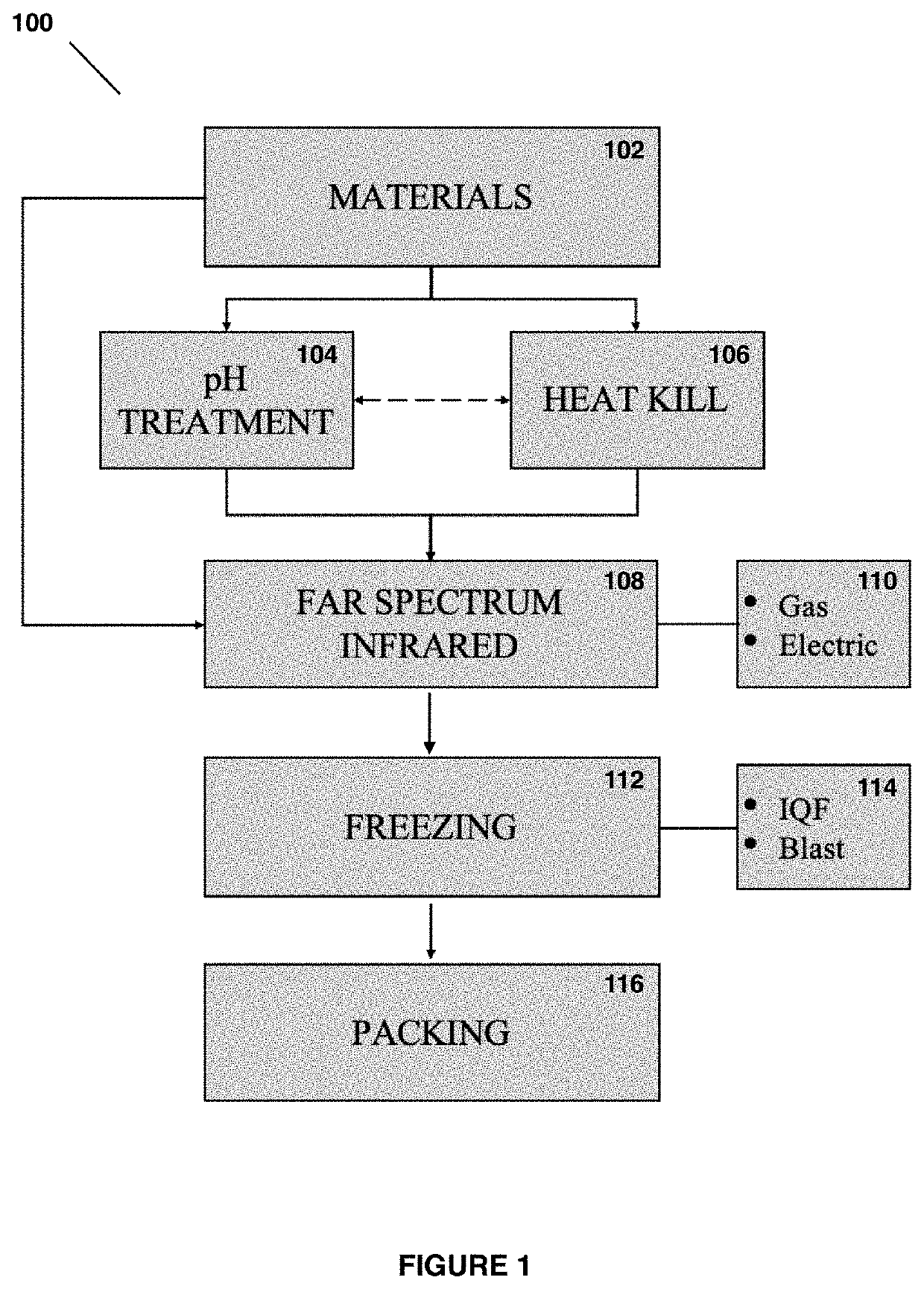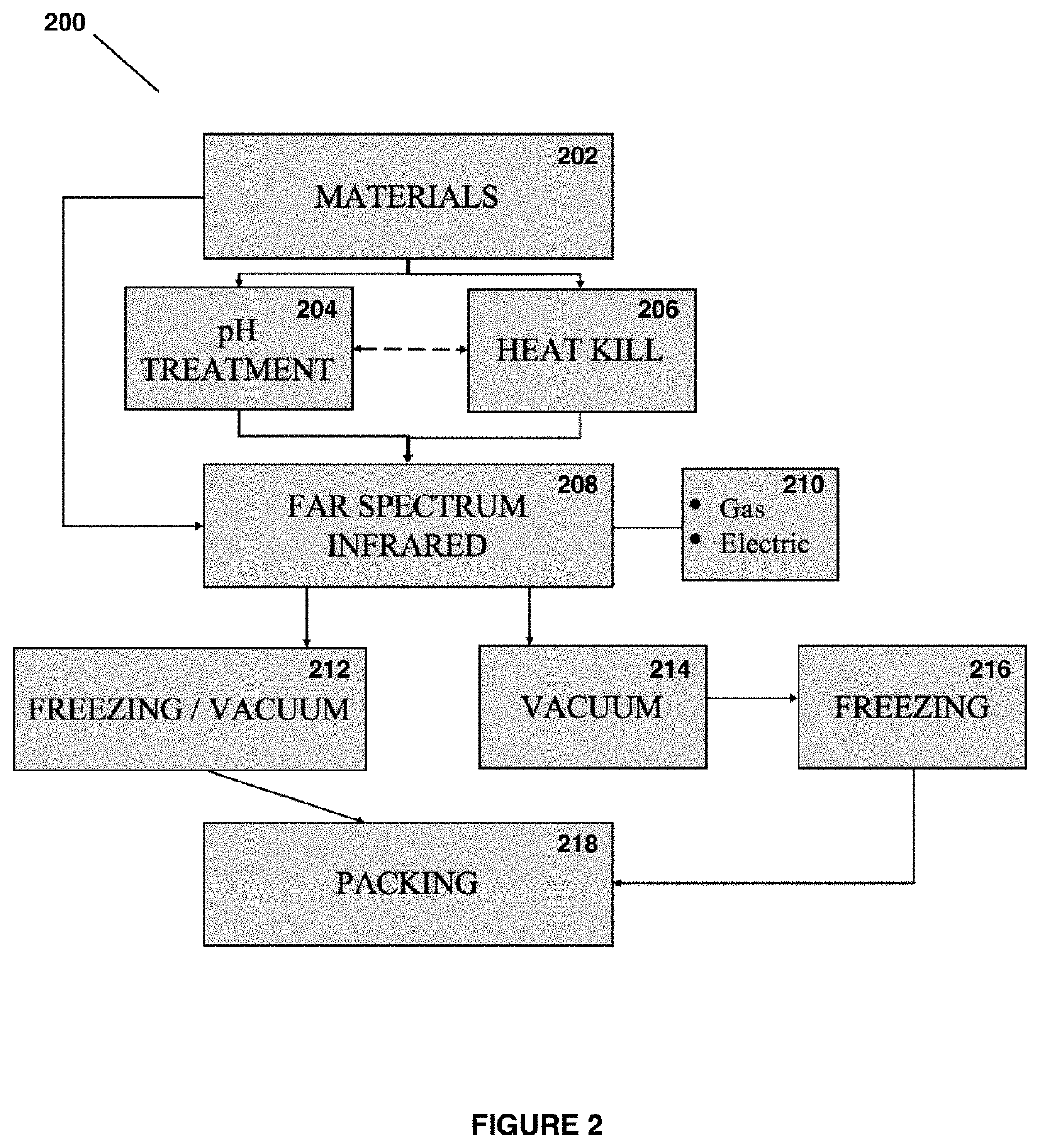System and method for infrared dehydrofreezing and dehydro freeze-drying
a technology of infrared dehydrofreezing and dehydro freeze-drying, which is applied in the directions of lavatory sanitory, fruit/vegetable preservation by freezing/cooling, disinfection, etc., can solve the problems of emitted harmful off-gas, high energy consumption, and relatively long drying time of the process, so as to reduce the potential physical and chemical damage
- Summary
- Abstract
- Description
- Claims
- Application Information
AI Technical Summary
Benefits of technology
Problems solved by technology
Method used
Image
Examples
Embodiment Construction
[0027]As a preliminary matter, as used herein, the term “food products” or “product” refers to any fruits, vegetables, seeds, nuts grains, fungi, tuber and cannabis, and other biological compounds including but not limited to: viruses, bacteria, probiotics, fermentates, metabolites, synthetic bio organic matter, and pharmaceuticals and each of them.
[0028]The process of preserving food products includes a process known as blanching. Blanching is a cooking process wherein a food is exposed to either saturated steam or hot water. This step is done prior to drying the item. The present invention seeks to supplement that process using medium to far field infrared radiation (IR) to perform the drying or blanching process. IR effectively transfers energy and penetrates food products, thereby effectively removing naturally present moisture. In addition, unlike traditional steaming the IR process is known to preserve or disable particular enzymes that are present in various food products. Th...
PUM
| Property | Measurement | Unit |
|---|---|---|
| wavelength range | aaaaa | aaaaa |
| wavelength range | aaaaa | aaaaa |
| wavelength range | aaaaa | aaaaa |
Abstract
Description
Claims
Application Information
 Login to View More
Login to View More - R&D
- Intellectual Property
- Life Sciences
- Materials
- Tech Scout
- Unparalleled Data Quality
- Higher Quality Content
- 60% Fewer Hallucinations
Browse by: Latest US Patents, China's latest patents, Technical Efficacy Thesaurus, Application Domain, Technology Topic, Popular Technical Reports.
© 2025 PatSnap. All rights reserved.Legal|Privacy policy|Modern Slavery Act Transparency Statement|Sitemap|About US| Contact US: help@patsnap.com


